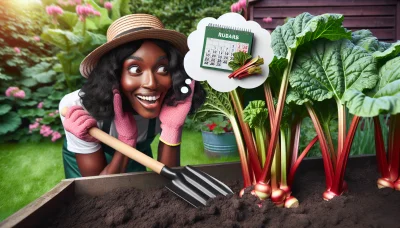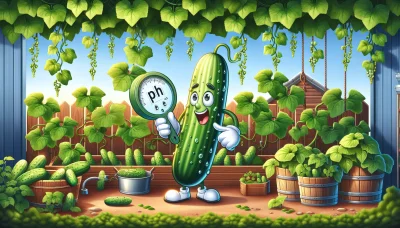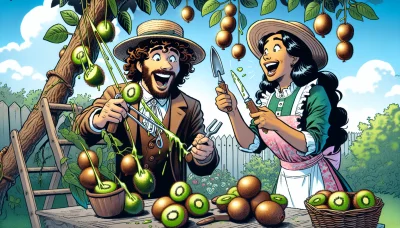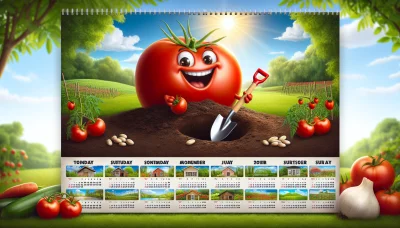Guava juice wiki Quiz
Test Your Knowledge
Question of
Introduction to Guava Juice
Guava juice, derived from the tropical guava fruit, is a refreshing and nutritious beverage that has gained immense popularity worldwide. Known for its unique flavor, which is a delightful mix of sweet and tart, guava juice is not only a favorite among food enthusiasts but also holds a special place in the hearts of gardening aficionados. This is due to the guava tree's adaptability in various climates, making it a rewarding addition to home gardens. Its relevance to gardening enthusiasts stems from their interest in cultivating the guava tree, which requires specific knowledge about its care and harvesting. The process of making juice from the fruit they have grown themselves adds an extra layer of satisfaction for these enthusiasts, connecting the dots between gardening, health, and culinary exploration.
The Guava Tree: A Gardener's Guide
The guava tree, known botanically as Psidium guajava, is a tropical plant that thrives in both humid and dry climates. This resilient tree can grow up to 30 feet tall and is highly esteemed for its sweet, aromatic fruits. Guava trees prefer well-drained soil and full sun exposure, making them ideal for a variety of garden settings. Cultivation practices for juice production involve regular pruning to maintain a manageable size and shape, enhancing fruit yield. The fruits are harvested when slightly soft to the touch, indicating ripeness, and are then processed to extract their flavorful juice, a popular and nutritious beverage enjoyed worldwide.
Benefits of Guava Juice
- Rich in Vitamin C: Guava juice is an excellent source of Vitamin C, which helps boost immunity and protect against infections.
- High in Antioxidants: The antioxidants in guava juice help fight free radicals, reducing oxidative stress and potentially lowering the risk of chronic diseases.
- Supports Heart Health: Guava juice may improve heart health by lowering blood pressure and bad cholesterol levels.
- Improves Digestion: Due to its high fiber content, guava juice can aid in digestion and prevent constipation.
- Helps Control Blood Sugar Levels: Some studies suggest that guava juice can help regulate blood sugar levels, making it beneficial for people with diabetes.
- Good for Your Skin: The vitamins and antioxidants in guava juice can contribute to healthy skin, protecting against aging and sun damage.
- May Aid Weight Loss: With its low calorie count and high fiber content, guava juice can be a satisfying and nutritious part of a weight loss diet.
How to Make Guava Juice at Home
Making guava juice at home is a refreshing way to enjoy the sweet and tangy flavor of guavas. With just a few simple steps and some basic kitchen equipment, you can prepare this delicious drink from the comfort of your home. Here's how:
- Gather your equipment: You will need a knife, a cutting board, a blender, a fine mesh strainer or cheesecloth, and a bowl or large measuring cup.
- Prepare the guavas: Rinse the guavas under cold water. Cut them into quarters and remove the seeds if you prefer a less gritty juice. Some people choose to leave the seeds in for extra fiber.
- Blend the guavas: Place the guava quarters into the blender. Add a cup of water or as needed to help the blending process. Blend until smooth.
- Strain the juice: Pour the blended guava through a fine mesh strainer or cheesecloth into a bowl or large measuring cup. Use a spoon to press down and extract as much juice as possible.
- Sweeten if desired: Taste the juice and add sugar or honey if you find it too tart. Guava's natural sweetness often means little to no sweetener is needed.
- Chill and serve: Refrigerate the juice until it's cold. Serve over ice for a refreshing drink.
Tips for the best results: Use ripe guavas for a sweeter juice. Adding a bit of lemon or lime juice can enhance the flavor and help prevent oxidation. For an extra kick, a pinch of salt or ginger can be added before blending.
Guava Juice Varieties and Flavors
| Variety | Characteristics | Flavor Profile | Nutritional Content |
|---|---|---|---|
| Pink Guava | Has a bright pink flesh, slightly sweeter than the white variety | Sweet and tangy with a strong aroma | Rich in Vitamin C, antioxidants, and dietary fiber |
| White Guava | Has a creamy white flesh, contains more seeds than pink guava | Mild sweetness with a hint of acidity | High in Vitamin C, Vitamin A, and dietary fiber |
| Red Guava | Deep red flesh, rarer than pink and white varieties | Sweet with a slight tartness, very fragrant | Contains lycopene, vitamins A and C, and potassium |
| Yellow Guava | Yellow-skinned with a white interior, smaller in size | Sweet and slightly sour, refreshing | Good source of Vitamin C, fiber, and antioxidants |
Growing Your Own Guava Tree
Planting a guava tree in your garden not only enhances its beauty but also provides you with a fresh supply of this delicious fruit. Guavas are relatively easy to grow and can be a rewarding addition to your garden. Here's a simple guide to help you plant, care for, and harvest guavas, along with tips on managing common pests and diseases.
- Planting: Choose a sunny spot with well-draining soil. Guava trees can be planted from seeds or purchased as young trees from a nursery. Ensure you plant them during the warm season to give them a good start.
- Caring: Water your guava tree regularly, but avoid overwatering as it dislikes soggy roots. Apply a balanced fertilizer every 1-2 months during the growing season. Prune the tree annually to maintain a manageable size and encourage fruit production.
- Harvesting: Guavas are typically ready for harvest when they turn light green to yellow and give off a fragrant aroma. Gently twist the fruit off the branch or use pruning shears to avoid damaging the tree.
- Common Pests and Diseases: Watch out for fruit flies, guava moth, and guava scale, which can damage the fruit. Diseases like anthracnose and root rot can also affect your tree. Regularly inspect your tree and treat with appropriate organic pesticides or fungicides when necessary.












